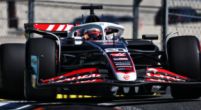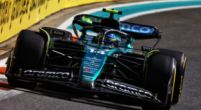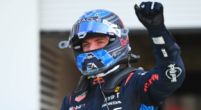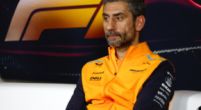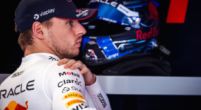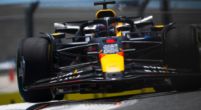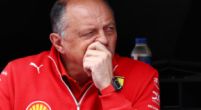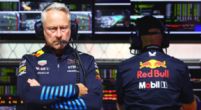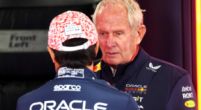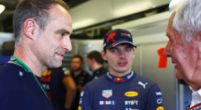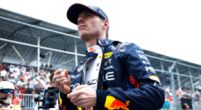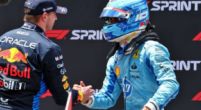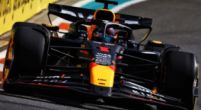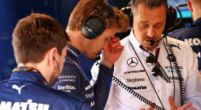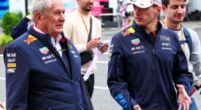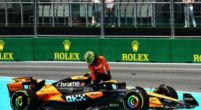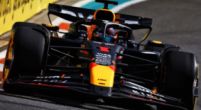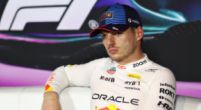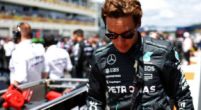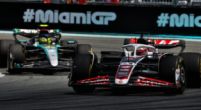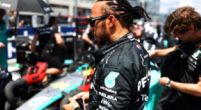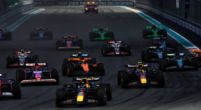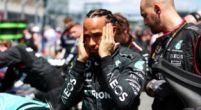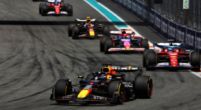Tech

F1 tech analysis | How Mercedes and Ferrari tried to fight Red Bull
The Mexican Grand Prix turned around as the red flag came out due to Kevin Magnussen’s big crash at the exit of turn 7. From the restart onwards, Verstappen was able to have total control of first place and went on to win the 16th race of this season as Red Bull proved their car was adaptable again. Charles Leclerc, after being passed by Lewis Hamilton on lap 40, couldn’t keep up with the pace anymore but still managed to get P3 at the end.
However, between the top teams fighting for second place in the Constructors' Championship, there was a clear difference in performance between Saturday and Sunday; let’s try to explain why this happened.
RB19 very strong in the second sector
Red Bull have been quick all weekend. Both Max Verstappen and Sergio Perez were very quick on Friday, especially in qualifying simulations, with all the top teams almost equal in the race pace simulations. Since FP1, however, the car seemed to be very well-balanced. As usual for the Mexican Grand Prix, the engineers decided to use the maximum downforce wing configuration to compensate for the loss of downforce caused by the altitude.
Finding a good mechanical set-up around here has always been quite tricky due to the different types of corners. Despite this, the RB19 seemed to be very close to the ground and able to absorb the high kerbs quite well (despite this car being born to run as low and as stiff as possible). This gave them a competitive car in the second sector and the third sector. In sector 3, having a car that can handle the kerbs as well as give good traction out of the final corner can really make the difference over the lap. To get this goal, the team probably decided to stiffen the anti-roll bars for lateral loads (and this resulted in a quick sector 2), at the same time maintaining a certain longitudinal softness in order to be strong in traction and acceleration.


All these changes gave Verstappen and Perez a chance to fight for pole on Saturday, even though the higher temperatures compared to Friday meant that Red Bull wasn’t in the optimal operating window for Q3, and the drivers eventually managed to get only P3 and P5.
The race on Sunday proved RB19's ability to manage the tyres. This result has been for sure the combination of Verstappen’s ability to make the tyres last and the great set-up chosen by the team, which really made the car very quick on every compound with a low tyre degradation. As Verstappen confirmed himself during the typical post-race interview: "It's always a team collaboration. The car just went super. The strategy we wanted to try was also top-notch. Too bad we couldn't finish it because of that red flag, but I think that would have been a top strategy."
However, things went quite differently on the other side of the box, as Sergio Perez’s race ended a few meters after the start.
A strong Ferrari in qualifying and on the mediums
The SF-23 seemed to suit the Autodromo Hermanos Rodriguez very well, especially in qualifying. On Friday, data confirmed that the car was not only very quick in the two straights of the first sector but also in the slow and twisty corners of the stadium section. The technical reason behind this speed is that Ferrari had a pure downforce index lower than Mercedes and McLaren, which resulted in very high top speeds.
The performance in the last sector resulted from very good work by the engineers to find the right mechanical set-up, both for what concerned stiffness and ride height, with the car very strong in braking and traction, as well as on the kerbs. The choice to run a soft mechanical set-up (to ensure the car could absorb all the roughness of the asphalt and high kerbs) made the SF-23 slower in the middle sector, where a stiff car and high downforce are required. Moreover, the team decided to open up the cooling outlets to make sure to cool down all the engine components as much as possible. Cooling around this track, in fact, is always challenging, not only because of the lower air density compared to other sea-level circuits but also because the race is often one of the hottest.

Despite this, the conditions played in favour of the Maranello team during qualifying: the hotter air temperature compared to Friday was the perfect condition for the car to work in its optimal working window and matched with Leclerc and Sainz’s ability to push at the maximum in Q3, allowed Ferrari to lock the front row for Sunday’s race. An unexpected result.
The scenario changed quite a bit on Sunday: during the first stint on the medium, Leclerc could keep a good pace without losing too much time to Verstappen. For this reason, the engineers decided to try the one-stop strategy, a plan that was completely destroyed a few laps later as the red flag came out. At the restart, after being overtaken by Hamilton (who was on the medium tyre), Leclerc could never keep up with his pace, struggling to find a good rhythm on the hardest compound.
This is proof that the Scuderia’s car is still a “diva”: it works really well in a very tight window, which is the combination of a series of conditions (high temperatures, soft tyre compounds, long straights, slow corners…) that are extremely difficult to find at every race. Car’s ability to adapt at every circuit is the element that sets Red Bull apart from all other competitors: while the Milton Keynes team’s car can suit almost all circuits, Mercedes and Ferrari’s performance strongly depends on the layout of the track and on the conditions faced every weekend.

A strong pace for Hamilton in the last stint
Mercedes' W14 looked very good in the middle and final sector this weekend but was still way off in the first due to a very slow car on the straights. This aspect played a role for both Hamilton and Russell during the race: the 7-times World Champion only managed to pass Leclerc after a risky and spectacular move. At the same time, Russell was stuck behind Russell for a very long time and was then ordered to pull over to make the tyres and engine come back to the correct working temperature.
The high downforce set-up, together with the good vertical load generated by the new floor brought in Austin, allowed Hamilton to have a good pace on the mediums in the last stint, as he only didn’t make them last till the end, but he even got the fastest lap.

Last but not least, a shout-out to Riccardo and Norris’ race must be done: the Aussie had a phenomenal weekend, qualifying P4 and eventually finishing the race in P7, helped by a great top speed (which helped him defend at the beginning) and a very low tyre wear, as in some phases of the race he was doing times in line with Sainz in front. Norris, on the other hand, was forced to start P17 after a bad qualifying, and a very good race (with a superb last stint on the mediums) allowed him to climb back to P5, certainly helped by MCL60 great downforce, which was a help in managing these tyres really well.
In conclusion, another weekend of racing has gone and with three races and a sprint to go, there’s still a lot to play for, especially for Mercedes and Ferrari, who are fighting for P2 in the Constructors’ Championship.



